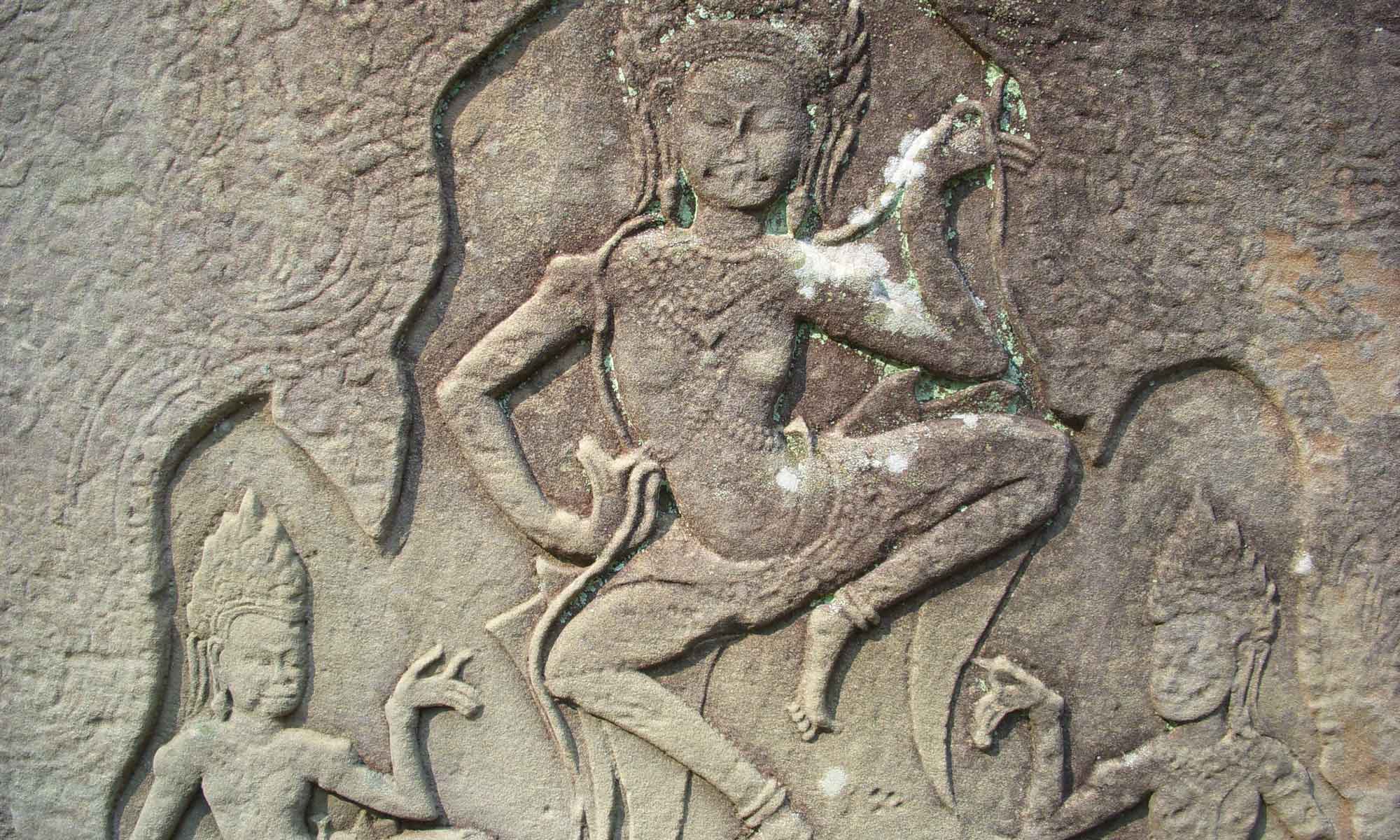The keynote speaker for the ASWM 2011 Midwest Symposium was Mary B. Kelly, textile expert and artist, who presented a lecture entitled Goddess. Women. Cloth: Inspired Ritual Textiles from Around the World. Kelly’s research shows that in folk cultures across the world, women make textiles inspired by goddesses and use them in rituals to honor their deities, contact spirits or protect their families and communities. This is not just an historical art, but continues today in many regions of the world.

Kelly’s presentation began with a textile fortunately preserved in ice, from Siberia in 400 BCE. This cloth was sewn with symbols of a seated goddess, crowned, seated under a sacred tree. Kelly compared and contrasted this cloth with another textile from the 19th century CE showing a goddess and a sacred tree of life surrounded by birds. The iconography was surprisingly similar over this very long period of time. Kelly had slides showing offerings of woven cloth placed at sacred trees, with gold coins placed on the cloths.
Also very common in sacred textiles of northern and eastern Europe are images of the horned deer mother and her deer daughter. (Female reindeer are horned, and in fact among some of these peoples the constellations we call Big and Little Dipper are named the Deer Mother and Deer Daughter.) In addition to appearing on textiles, the deer’s horn appears in the peaked headdress worn by brides in Slovakia.

These textiles formed a major modality for passing traditions down from woman to woman. The cloths are imbued with power: protection and fertility. The symbols must be absolutely correct for the power to be fully expressed. The inspiration of the goddess came to the weavers in dreams, showing the patterns to be woven. These weavers believe if they don’t use symbols correctly the world will fall.
![norwaygoddess2[1]](https://i0.wp.com/womenandmyth.org/wp-content/uploads/2011/06/norwaygoddess21.jpg?resize=193%2C300&ssl=1)
Mary B. Kelly is Professor Emerita at Tompkins Cortland Community College, an affiliate of the State University of New York, and holds advanced degrees from Syracuse University and the Rhode Island School of Design. She has published numerous books and articles in the United States and abroad, notably in Folk Dress in Europe and Anatolia, ed. L. Welters (1999 ); Making and Using Ritual Cloth ( 2004 ); Goddess Embroideries of the Northlands ( 2009 ); Kaspaikka Muistiilina ( Memory Cloth); ed. L. Sappi (2010); and Goddesses in World Culture, ed. P. Monaghan (2010).
Kelly’s research has been supported by several Fulbright grants, and recent articles have appeared in such textile publications as Piecework, Needle Arts, Bunad, and Vesterheim. She served as guest curator of the exhibition “Sacred Symbols, Ceremonial Cloth” at the Vesterheim Norwegian American Museum in Decorah, IA (2009). She has lectured at the Smithsonian Institution and the Textile Museum, in Washington, DC, the Mingei Museum of Folk Art,The Czech and Slovak Museum, the Ukrainian Museum, and at Oslo University, Norway.
Kelly makes her home on Hilton Head Island, SC, where she teaches, exhibits and maintains a painting/weaving studio.


You must be logged in to post a comment.